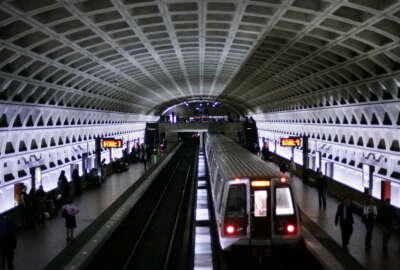Zooming along Maryland Route 200 on Sunday, I admired the fall hues of the foliage lining the road. At a point where the bicycle path swings close, a black-and-white-clad cyclist zoomed along in the opposite direction.
If the ICC is a great way for people in a large portion of a populous county to get to other populous counties, it’s also a piece of what politicians constantly talk about — infrastructure. The next administration will have to deal with infrastructure issues. Far from being merely a Transportation Department concern, nowadays nearly every project draws in portions of Interior and the EPA.
I’m a big fan of the five-year-old Intercounty Connector, the toll road connecting Interstate 270 in Gaithersburg to I-95 and, beyond that, U.S. Route 1 in Prince George’s County. It’s one of my favorite highways. The last piece of it, the segment from 95 to 1, was completed in 2014.
Yet the road was first proposed during the Truman administration. It was to be part of a circumferential highway enclosing the District, but further out than the route that eventually became the Beltway. When I first moved here 25 years ago, it took me a few times to understand what WTOP traffic reporters were talking about when they discussed the “inner loop” and the “outer loop.” What outer loop, I wondered. There’s nothing around here like, say, the 495 in Massachusetts — an outer loop in relation to the famed inner loop originally known as Route 128. (Circumferential doesn’t quite apply to Boston — the Atlantic Ocean gets in the way.)
Though it seems inevitable in retrospect, the ICC nearly didn’t get built. Its long and tortured history entails the county, state and federal politics and funding, seemingly endless environmental reviews, and bitter battles over what the road’s utility would ultimately be. It finally got underway thanks to work by two governors, one a Republican and one a Democrat.
Tomorrow’s vote will form in part a referendum on the role of the United States in the world and on the role of the federal government in the affairs of citizens and non-federal levels of government. Both candidates say they want to build new infrastructure and improve the roads and grids we’ve already got. They can both correctly cite long-standing precedent for federal involvement in infrastructure to boost private economic development. In the 19th century, infrastructure projects were called internal improvements. The United States wasn’t merely rural, it was in large measure wild, with huge sections not even surveyed. Everyone agreed the young country needed roads and waterways in order to grow.
Yet people squabbled and argued as far back as the early 1800s over federal funding for infrastructure and whether it was constitutional. “Sectionalism” and potential pork also came into play. John C. Calhoun proposed an early infrastructure fund in a bill that was vetoed in 1817 by James Madison on constitutional grounds.
Today it’s a given that the federal government pays for a large portion of infrastructure costs at the state and local levels. Yet nearly every project takes an almost impossible alignment of interests, laws and regulations to actually go from proposal to ground-breaking. Maybe the next president can help speed things up. Snail Darters lurk everywhere.
Copyright
© 2024 Federal News Network. All rights reserved. This website is not intended for users located within the European Economic Area.
